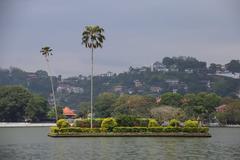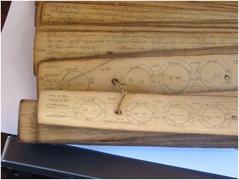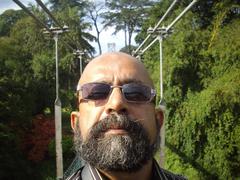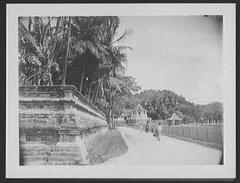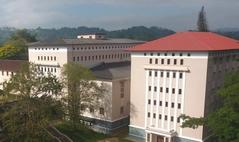
Temple of the Tooth Museum Kandy: Visiting Hours, Tickets, and Historical Significance
Date: 04/07/2025
Introduction
Nestled in the heart of Kandy, Sri Lanka, the Temple of the Tooth Museum—part of the revered Sri Dalada Maligawa complex—stands as a beacon of spiritual devotion, cultural identity, and historical resilience. Home to the Sacred Tooth Relic, believed to be the left canine tooth of Gautama Buddha, the temple complex is a UNESCO World Heritage Site and a symbol of Sri Lankan sovereignty. The museum offers visitors a unique opportunity to explore the intertwined legacies of Buddhism, Kandyan monarchy, and national heritage, showcasing artifacts, regalia, manuscripts, and ceremonial objects that narrate centuries of devotion and power (roamingvoyager.com; travellotlanka.com; sridaladamaligawa.lk).
This comprehensive guide covers everything you need to know about visiting the Temple of the Tooth Museum, including opening hours, ticketing, dress code, accessibility, and essential travel tips. Whether you are a pilgrim, history enthusiast, or curious traveler, this resource will help you make the most of your visit to one of the world’s most significant Buddhist sites (official Temple of the Tooth website; visitsrilanka.ai).
The Sacred Tooth Relic: Origins and Historical Journey
How the Relic Came to Sri Lanka
The Sacred Tooth Relic is among Buddhism’s most venerated artifacts. After the Buddha’s cremation in 543 BCE, his relics were distributed among his followers. In the 4th century CE, to protect the tooth from destruction amid political turmoil in Kalinga (present-day Odisha, India), Princess Hemamali and Prince Dantha smuggled it into Sri Lanka, hidden in Hemamali’s hair. King Sirimeghavanna of Anuradhapura received the relic, recognizing its immense spiritual and political significance (roamingvoyager.com; travellotlanka.com).
Relic’s Journey and Role in Sovereignty
The relic’s presence conferred legitimacy to Sri Lankan monarchs. It moved with the shifting capitals—Anuradhapura, Polonnaruwa, Dambadeniya, Yapahuwa, Kurunegala, Kotte, and finally Kandy—becoming inseparable from the island’s political and religious authority (wikipedia.org; srilankatravelnotes.com; sridaladamaligawa.lk).
Construction of the Temple
The present-day Temple of the Tooth, built in the 16th century and expanded by successive Kandyan monarchs, is an architectural masterpiece. Its intricate woodwork, golden roofs, and elaborate carvings reflect Kandyan artistry. The temple complex’s resilience—surviving colonial invasions and even modern attacks—symbolizes the enduring spirit of Sri Lankan identity (travellotlanka.com; sridaladamaligawa.lk).
Religious and Cultural Significance
Symbol of Faith
The Sacred Tooth Relic is a living symbol of the Buddha’s teachings, believed to bestow blessings and protection upon the country. Enshrined within a series of golden, gem-studded caskets shaped like stupas, the relic draws pilgrims seeking healing and good fortune (srilankatravelnotes.com; sltraveller.com).
Daily Rituals and Ceremonies
Daily puja ceremonies—held at 5:30 AM, 9:30 AM, and 6:30 PM—feature traditional drumming, chanting, and offerings of flowers. While the actual relic remains hidden, devotees and visitors can witness the ritual veneration of its casket, accompanied by a vibrant spiritual ambiance (srilankaholidayguide.com; travellotlanka.com).
The Esala Perahera Festival
Each July or August, the Esala Perahera festival transforms Kandy, with processions led by caparisoned elephants, Kandyan dancers, and drummers. A replica casket representing the relic is paraded, showcasing Sri Lanka’s living heritage and drawing thousands of devotees and tourists (visitsrilanka.ai; sltraveller.com).
The Temple of the Tooth Museum: Highlights and Collections
Location and Layout
The museum occupies the first and second floors of the Royal Palace wing, above the main shrine. Its proximity to the shrine allows visitors to transition seamlessly from ritual spaces to curated historical exhibits (official Temple of the Tooth website).
Notable Collections
- First Floor: Features portraits of Chief Prelates and Kandyan kings, rare manuscripts, and documents chronicling the relic’s journey and its custodians.
- Second Floor: Houses ritual caskets, royal regalia, ceremonial attire, and gifts from foreign Buddhist communities. Highlights include a painted replica of the Buddha’s Footprint, a silver water pot, and a silver hanging lamp from the Kandyan kings.
- Artifacts: Buddhist ritual objects (fans, banners, offering bowls), a series of paintings illustrating the relic’s history, and Buddha statues from various regions.
The museum’s collections offer a deep dive into Buddhist rituals, Kandyan court traditions, and the temple’s international religious ties (visitsrilanka.ai; sridaladamaligawa.lk).
Visitor Information
Opening Hours
- Temple Complex & Museum: Open daily from 5:30 AM to 8:00 PM.
- Museum Galleries: Best visited during daylight, generally from 7:30 AM to 6:00 PM.
Tickets and Admission
- Foreign Visitors: General admission is approximately LKR 2,000–3,000 (USD 6–9), with possible additional fees for photography and shoe storage.
- Locals: Reduced fee or free entry.
- Where to Buy: Tickets are available onsite at the main entrance or through authorized travel portals. Advance booking is advised during festivals.
Dress Code and Conduct
- Cover shoulders and knees. Sarongs are available for rent if needed.
- Shoes and hats must be removed before entry; shoe storage is available for a nominal fee.
- Maintain quiet and respectful behavior, especially during ceremonies.
Accessibility
- Wheelchair ramps and staff assistance are available at main entrances; some areas may be challenging due to historical architecture. Contact the temple in advance for specific accessibility needs.
Photography and Filming
- Allowed in most museum and temple areas, except in the inner sanctum. Flash photography and commercial filming require prior permission.
Guided Tours
- Licensed guides (multiple languages) are available at the entrance and can offer rich historical and cultural context. Audio guides are also offered by some operators.
Facilities
- Restrooms, flower stalls, souvenir shops, and refreshment options are available within or near the complex. Food and drink are not allowed inside temple or museum buildings.
Travel Tips
- Best Time to Visit: Early morning or late afternoon for fewer crowds and better lighting for photography.
- Getting There: Kandy is accessible by car/taxi (3.5 hours from Colombo), train (Kandy Railway Station is 2 km away), or local bus. Tuk-tuks are readily available for short transfers. Paid parking is nearby.
- Nearby Attractions: Kandy Lake, Royal Botanical Gardens, and the Udawatta Kele Sanctuary are all worth exploring to enrich your cultural itinerary.
Responsible Tourism
- Dress and behave respectfully; silence mobile phones and avoid public displays of affection.
- Use bins for litter and avoid single-use plastics.
- Hire local guides and purchase souvenirs from authorized sellers to support the community.
- Always ask permission before photographing people, especially monks and devotees.
Frequently Asked Questions (FAQ)
Q: What are the Temple of the Tooth visiting hours?
A: The complex is open daily from 5:30 AM to 8:00 PM; museum galleries typically open 7:30 AM to 6:00 PM.
Q: How much are tickets?
A: Foreign visitors pay LKR 2,000–3,000; locals often pay less or enter free. Additional fees may apply for photography and shoe storage.
Q: Is the site accessible for people with disabilities?
A: Yes, there are ramps and assistance, though some historic areas may be challenging.
Q: Can I take photos inside?
A: Photography is allowed except in sacred areas; always observe posted signage.
Q: Are guided tours available?
A: Yes, licensed guides are available at the entrance.
Q: What is the dress code?
A: Modest clothing covering shoulders and knees is required.
Conclusion
The Temple of the Tooth Museum in Kandy is not just a monument but a vibrant, living testament to Sri Lanka’s spiritual and royal legacy. Through its rich collections and daily rituals, the site offers an immersive journey into Buddhist tradition and national identity. Respect the visiting hours, dress code, and local customs to ensure a meaningful, respectful visit. Consider guided tours for deeper context, and complement your trip with nearby historical and natural attractions.
For the latest updates on visiting hours, ticketing, and special events, download the Audiala app and follow official social media channels. Embark on your journey to witness firsthand the living legacy and enduring heritage of Sri Lanka’s most treasured monument (travellotlanka.com; sridaladamaligawa.lk; official Temple of the Tooth website).
Sources and Further Reading
- Roaming Voyager: Temple of the Tooth Kandy
- Travel Lot Lanka: Temple of the Tooth in Sri Lanka
- Visit Sri Lanka AI: Temple of the Tooth Kandy
- Sri Dalada Maligawa Official Website
- Sri Lanka Holiday Guide: Visiting Kandy Temple
- Rediscover Sri Lanka: Kandy Esala Perahera
- Kandy Esala Perahera Event Page
- Travel Map Sri Lanka: Temple of the Tooth Relic

